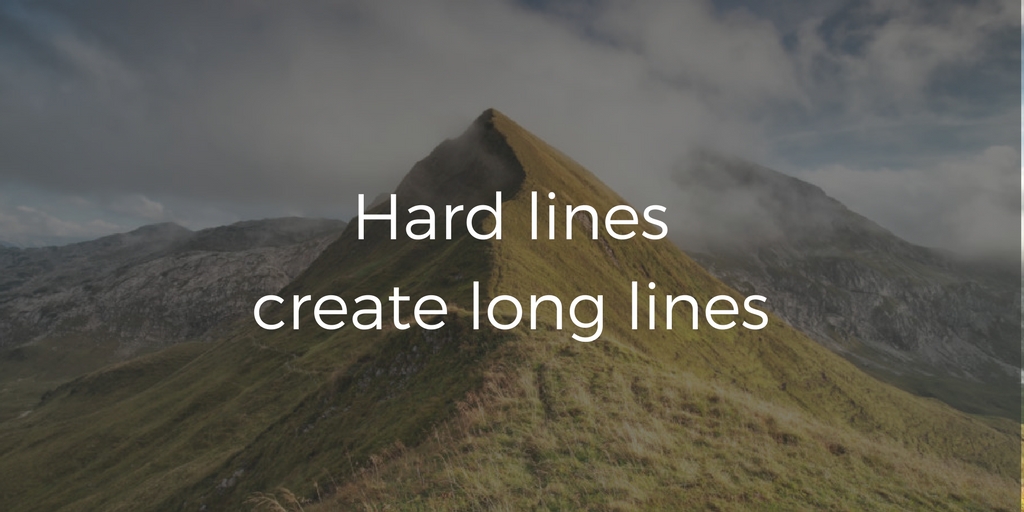When I see a movie or a painting, I see the result of what someone created. I don’t think much about how it was made. I don’t understand it like someone who studied art or made a movie.
When I see a website, ad, sales pitch or product design, I don’t just see it for what they are. I think about the intent of the person who made it and try to understand what they were trying to accomplish.
Most people don’t do this. It’s the result of creating and marketing businesses and designing products for more than 30 years. My Dad was in advertising most of his career, so I grew up paying attention to these kinds of things.
When I look around, I see things that most people don’t notice. In particular, I see lines that most people don’t see.
Not physical lines or people lined up in queues. I’m talking about the lines that are drawn behind the scenes in the process of creating what shows up in the commercial world, and what doesn’t.
- The line between who the business is targeting, and who they aren’t
- The line between the foods a restaurant sells, and the foods they don’t
- The line between the words featured on a homepage, and the words that aren’t
- The line between the things a spokesperson actually says in an interview, and the things they don’t
- The lines between product decisions like pricing, quality and design
These lines are always there. But there’s something deeper going on.
The most successful software products, politicians, consumer products or restaurants have the hardest lines separating what they are and what they aren’t, who they serve and who they don’t, how they actually benefit their customers and how they don’t.
The most successful businesses are doing the opposite of trying to please everyone and do everything. In fact, the most successful ones draw hard lines and say no to more things than the others.
Show me a successful restaurant in your town that always has a long line, and I’ll show you that they are known for one thing for one audience. These businesses could serve any kind of food without much trouble, but they do the opposite, by choice. They draw a hard line.
The highest paid actor in Hollywood in 2017 wasn’t the actor with the most versatile acting skills. Nope. It’s Dwayne “The Rock” Johnson, who plays Dwayne “The Rock” Johnson in every movie he appears in. Every time, it’s a popular mix of muscle, ironic humor and tough-guy action. He could do other kinds of acting, but he doesn’t. He draws a hard line and says no a lot.
Remember Apple’s “I’m a PC. I’m a Mac” ad 10 years ago? Most people do, since Apple drew a hard line and said, “we’re not for 90% of people who use PCs, we’re just for the few people who think like we do.” We heard the message clearly and now Mac is more mainstream than ever.
The highest paid doctors in the U.S. are not the generalists who do the most things for a broad audience. The most successful ones are the specialists who do one thing for one audience: the heart surgeons who only do bypass surgery and the knee surgeons for professional athletes. These doctors could do a variety of treatments for a wide audience, but they don’t. And when it’s really important, we see the best specialist we can find, and we pay them a lot.
These specialists are known for being the best at something important for someone specific.
The more they draw hard lines and say, “we only do this” and “we are just for these people,” the better their product is for their audience. Just as important, the more their message gets heard and the farther their “beacon” travels to reach their specific audience.
Show me a business with a long line, and I’ll show you a business that draws the hardest lines. Clear lines between the few things they say yes to, and the many things they say no to.
